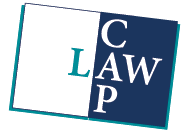Through the Eye of Katrina
Social Justice in the United States
by Kristin A. Bates, Richelle S. Swan
2007
Tags:
440 pp $40.00
ISBN 978-1-59460-288-7
The events surrounding Hurricane Katrina offer a remarkable case study of the continuing social divide in the United States. This book includes scholarly articles examining the continued struggle for social justice from the perspectives of communication, criminology, education, ethnic studies, history, justice studies, law, political science, and sociology. This multidisciplinary case study approach is a highly effective way of helping readers understand contemporary debates about social justice including the roles of historically persistent structural inequality, racism and classism, media portrayals of life changing events, government reactions and responsibilities in the face of crises, and the role of public policy and activism in response to social injustice.
The collection of articles is divided into three sections representing the causes of, consequences of, and responses to social injustice as illustrated through the case study of Hurricane Katrina. The first section, Images from the Past: Social Justice and Hurricane Katrina in Context examines the structural inequality and cultural divisions in the United States that make a just response to disaster difficult. The second section, Images of the Disaster: Reactions to Hurricane Katrina, offers analyses of the continuing struggle for social justice in the face of such an event as Hurricane Katrina. The third section, Images of the Future: Policy, Activism, and Justice, focuses on public policy and activism responses for a more just society.
“Editors Bates and Swan...argue convincingly that Hurricane Katrina's severe social and environmental consequences are best apprehended within a social justice framework because the hurricane revealed and magnified extensive, entrenched patterns of racial and class discrimination against impoverished minority residents of New Orleans....The essays are persuasive because they blend topicality with academic rigor, providing many relevant sources, detailed footnotes, and cogent analyses of situations. The book significantly enhances understanding of the historical and contemporary circumstances that created the Hurricane Katrina disaster.” — CHOICE Magazine, August 2008


